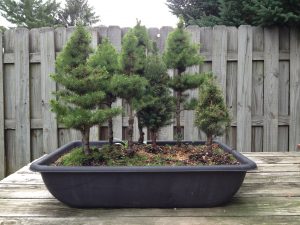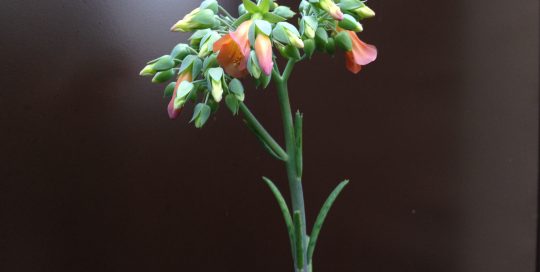Bonsai: The Miniature Forest
Views: 7822

The annual garden walk in Bloomington, Indiana was last weekend, which happened to coincide with Father’s Day. Both of our Dads have green thumbs. So, my husband and I invited them down for steaks on the grill and a tour of some of Bloomington’s finest yards. Despite heavy rains for days on end, the weather cleared on Father’s Day. After enjoying a nice lunch on the deck, we were off to start the tour. Each of the gardens had their own unique qualities, but one had an element I was particularly taken with. The homeowner had moved his bonsai collection out to the garden for everyone to enjoy.
Ancient Artform
I think most people are impressed by—and drawn to—the bonsai form, but I am absolutely mesmerized by these tiny living sculptures. Although the word bonsai means “tray planting” in Japanese, the practice originated in China and dates back over 1,000 years. In fact, there is a bonsai tree in Japan that is said to be over 800 years old.
Now, I am not claiming to be a bonsai expert. In fact, I’m not even sure this miniature forest is even technically bonsai. It may be one of the many other similar practices like penjing or saikei. However, I felt inspired to ramble about it in this week’s Container Corner post.
The point of bonsai is to depict a mature tree in miniature form, often with a sense of struggle for life in harsh elements. The hand of the artist is noticeable. The plant has obviously been manipulated into this form. However, it should not distract or take away from the natural composition.
Pruning Bonsai
This miniature forest is composed of Alberta Spruces, which are one of the more challenging plants to bonsai because of their supple branches and lack of back budding when pruned.
These spruces were purchased as small plants (probably 3-4 inch pots) and trained as they grew. But it is also possible to buy larger nursery stock and prune it down to miniature size.
Starting with small plants takes longer to achieve the mature look of a thick trunk. However, it is easier for the inexperienced gardener to keep the plant alive and healthy. Pruning down a large nursery plant instantly creates the look of maturity, since the trunk is already larger, but it is easier to kill a more mature plant by pruning too much all at once.
Bonsai plants require constant attention to water and light needs, nutrient levels, pruning both roots and shoots, and wiring branches to create form, but it is very rewarding to see a specimen take shape over the years into a piece of art. This is a great hobby for anyone to try.
Meet Abbi Hayes
Abbi's Recent Posts

Kalanchoe delagoensis: Mother of Millions







